DIY Home Decor: How to Repurpose Old Items
Are you tired of the same old decor in your home? Do you ever look around and feel like your living space needs a little more personality? Well, you're in luck! This article explores creative ways to transform old items into beautiful home decor. Repurposing is not just a trend; it's a movement that encourages sustainability while allowing your creativity to shine. Imagine turning that dusty old chair in your garage into a stunning statement piece or transforming glass jars into chic candle holders. With a little imagination and effort, you can breathe new life into your living space, all while being eco-friendly and budget-conscious.
Repurposing is all about giving new life to items that might otherwise be discarded. It’s like giving your old stuff a second chance, and trust me, it’s more rewarding than you might think. Not only does it help reduce waste—keeping items out of landfills—but it also saves you money. Why spend a fortune on new decor when you can create something unique from what you already own? Plus, repurposed items often have a story to tell, adding a touch of character to your home that mass-produced items simply can't match. Think of it as turning trash into treasure!
Before diving headfirst into your repurposing adventures, it’s crucial to have the right tools at your disposal. Having the right tools not only makes the process smoother but also safer. Here’s a quick rundown of some must-have tools for your DIY toolkit:
- Measuring Tape: Precision is key when crafting.
- Utility Knife: Perfect for cutting through various materials.
- Hot Glue Gun: A lifesaver for quick fixes and crafting.
- Sandpaper: Essential for smoothing rough edges on furniture.
- Paintbrushes: For adding a fresh coat of paint to your projects.
Having these tools handy can make your crafting experience enjoyable and efficient. You don’t want to be halfway through a project only to realize you’re missing a crucial item!
Old furniture can be transformed into stunning pieces with just a sprinkle of creativity. Think about that rickety chair you’ve been meaning to toss. With some paint and a bit of upholstery, it could become a gorgeous accent piece in your living room. Or perhaps you have an old table that could use a facelift? A little sanding and staining can turn it into a rustic masterpiece. Here are a few ideas to get your creative juices flowing:
- Chairs: Reupholster them with fun fabric or paint them in bold colors.
- Tables: Add a glass top to an old table for a modern twist.
- Cabinets: Transform them into unique storage solutions with a fresh coat of paint.
With a little imagination, your old furniture can become the highlight of your home decor.
Common household items can serve as unique decor elements. Ever thought about turning that empty wine bottle into a chic vase? Or perhaps those old mason jars could become stylish candle holders? The possibilities are endless! Here are some fun ideas:
- Jars: Use them as storage for kitchen utensils or as decorative pieces filled with fairy lights.
- Bottles: Paint them or wrap them in twine for a rustic look.
- Fabrics: Old linens can be turned into cushion covers or table runners.
With just a bit of creativity, everyday items can become conversation starters in your home.
Don’t let old clothing end up in the trash! Instead, think of inventive ways to upcycle worn-out clothes into trendy home accessories. For instance, old t-shirts can be transformed into quirky cushion covers or wall art. You could even turn jeans into stylish storage baskets. The beauty of upcycling clothing is that it allows you to keep memories while also being practical. Here are some ideas to inspire you:
- Cushions: Sew together fabric scraps for a patchwork effect.
- Wall Art: Frame pieces of fabric or create a fabric collage.
- Table Runners: Use old scarves or tablecloths for a unique touch.
By upcycling, you not only save money but also create one-of-a-kind pieces that reflect your personal style.
Nature offers a wealth of materials for home decor. Why not incorporate natural elements like branches, stones, and leaves into your DIY projects? A simple branch can become a rustic coat rack, while stones can be painted and used as decorative accents. Bringing the outdoors in adds warmth and character to your home. Here are a few ideas:
- Branches: Use them as curtain rods or create a unique wall hanging.
- Stones: Paint them for a decorative touch or use them in a centerpiece.
- Leaves: Press them into art or use them in table settings.
Nature’s materials can create an inviting, rustic atmosphere that feels both cozy and stylish.
Repurposing can also cater to seasonal changes. Why not create decorations that reflect the seasons using old items? For instance, you can turn empty jars into spooky lanterns for Halloween or repurpose old fabric into festive tablecloths for Christmas. Here are some seasonal ideas:
- Spring: Use floral patterns from old clothes for cheerful decor.
- Summer: Create a beach-themed centerpiece from seashells and driftwood.
- Fall: Repurpose old sweaters into cozy table runners.
- Winter: Use glass jars to create snow globe decorations.
By changing your decor with the seasons, you keep your home feeling fresh and inviting all year round.
Once you've completed your projects, it’s time to showcase your creativity! Sharing your DIY creations can inspire others to embark on their own repurposing adventures. Consider posting your projects on social media platforms like Instagram or Pinterest, where DIY enthusiasts gather. You can also join local crafting groups or online forums to share ideas and techniques. Not only will you inspire others, but you might also discover new projects to try!
Q: What is the difference between repurposing and upcycling?
A: While both involve transforming old items, repurposing is about giving an item a new function, whereas upcycling often enhances the item's value or aesthetic appeal.
Q: Can I repurpose any item?
A: Most items can be repurposed, but it’s essential to consider the material and safety. Always use items that are safe and suitable for your intended use.
Q: Where can I find inspiration for DIY projects?
A: Inspiration can be found everywhere! Look at home decor blogs, Pinterest boards, and even nature for ideas. Your imagination is your best tool!

Understanding the Concept of Repurposing
Repurposing is a fascinating concept that breathes new life into items that have lost their original function or charm. Instead of tossing these items into the trash, why not transform them into something beautiful and functional? This creative process not only allows you to express your artistic side but also contributes positively to the environment. By repurposing, you’re actively participating in reducing waste and minimizing your carbon footprint. Think about it: every time you give an old item a second chance, you’re making a small yet significant impact on the planet!
One of the major benefits of repurposing is the potential for **cost savings**. Why spend a fortune on new decor when you can create stunning pieces from what you already have? Imagine turning an old wooden ladder into a rustic bookshelf or transforming a vintage suitcase into a unique coffee table. These projects not only save you money but also add a personal touch to your home, making it a reflection of your style and creativity.
Moreover, repurposing adds a unique character to your living space. Each item tells a story—one that is filled with memories, history, and creativity. When you walk into a room adorned with repurposed decor, you’re not just seeing furniture or art; you’re experiencing a narrative that is rich and inviting. This is what makes repurposed items so special—they’re not just objects; they’re conversation starters!
In addition to environmental and economic benefits, repurposing can also be a therapeutic outlet. Engaging in DIY projects can reduce stress and provide a sense of accomplishment. When you take the time to create something with your own hands, you foster a deeper connection to your space and the items within it. So, whether you're a seasoned crafter or a novice looking to try something new, repurposing can be a rewarding journey.
To sum it up, embracing the concept of repurposing not only allows you to create stunning decor but also promotes sustainability and personal expression. It’s about finding beauty in the old and forgotten, and turning it into something that enhances your home and your life. So, the next time you’re about to throw something away, pause and ask yourself: can this be transformed? You might just find that the possibilities are endless!
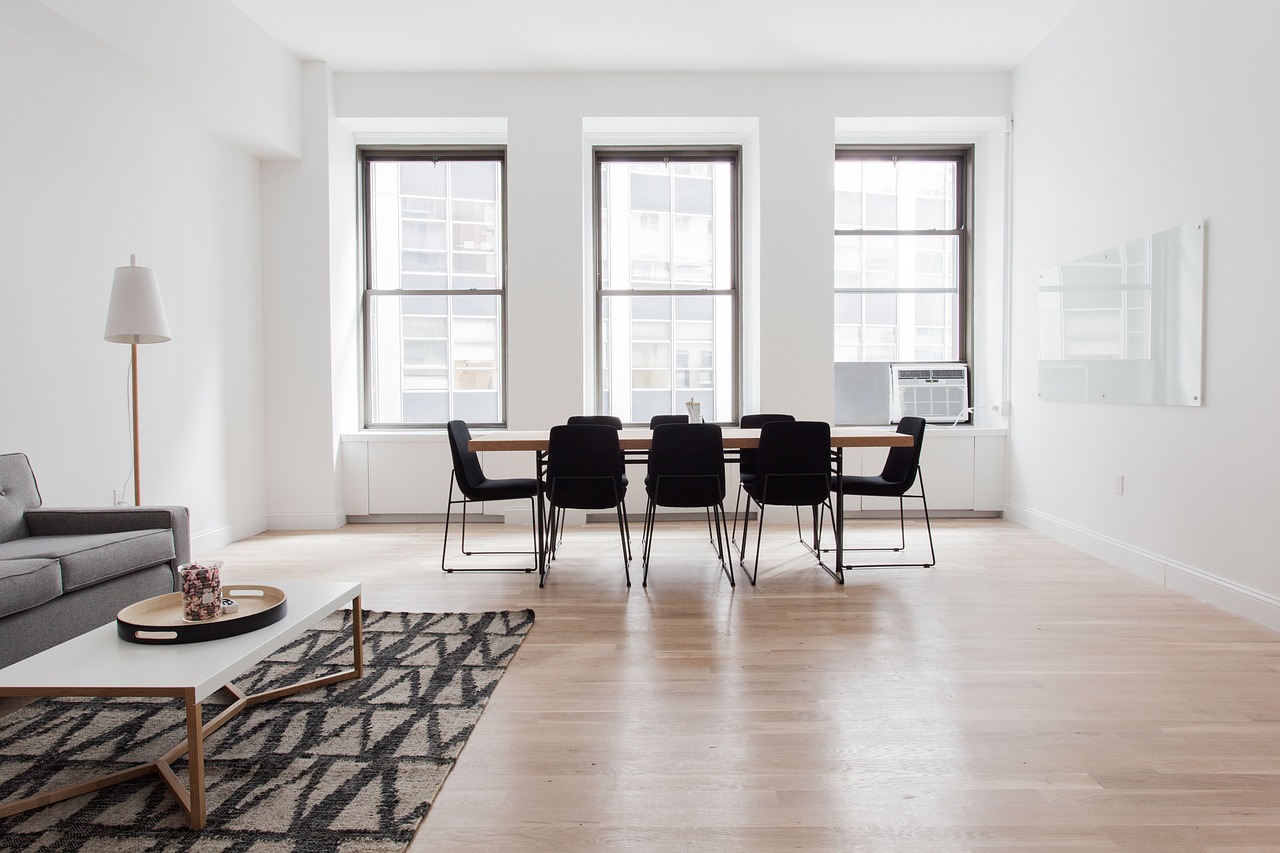
Essential Tools for DIY Projects
Before diving into the exciting world of DIY home decor, it's crucial to equip yourself with the right tools. Think of these tools as your trusty sidekicks, ready to assist you in transforming your creative visions into reality. Having the right tools not only makes the process smoother but also enhances your safety and efficiency. So, let’s explore some of the essential tools that every DIY enthusiast should have in their arsenal.
First and foremost, a good quality toolbox is a must. This is where you'll keep all your tools organized and easily accessible. Imagine searching for a screwdriver in a cluttered drawer—it can be frustrating! A toolbox keeps everything in one place, saving you time and keeping your workspace tidy.
Next on the list is a set of basic hand tools. These typically include:
- Screwdrivers - Both flathead and Phillips head are essential for various projects.
- Hammer - Perfect for driving nails into wood or other materials.
- Pliers - Great for gripping, twisting, and cutting wires.
- Measuring tape - Accurate measurements are key to any DIY project.
In addition to hand tools, having power tools can significantly speed up your projects. A cordless drill is invaluable for drilling holes and driving screws with ease. It's like having a magic wand that makes your work faster and more efficient! Similarly, a saw (whether it’s a circular saw or a jigsaw) will allow you to cut wood and other materials with precision. Just remember to always prioritize safety by wearing protective gear, such as goggles and gloves, when using power tools.
Another essential tool is a craft knife. This handy little blade is perfect for intricate cuts and detailed work, especially when repurposing small items or creating decor from paper and fabric. Pair it with a cutting mat to protect your surfaces and keep your workspace organized.
Let’s not forget about adhesives. Depending on your project, you might need wood glue, hot glue, or even a strong craft adhesive. These are the unsung heroes of DIY, bringing together various materials to form cohesive pieces. Just like a good friendship, the right adhesive holds everything together!
Lastly, a work surface is crucial. Whether it’s a sturdy table or a dedicated crafting area, having a designated space to work will help you stay focused and organized. You might even consider covering it with a protective layer to prevent damage from spills or scratches.
In summary, having the right tools can make your DIY journey enjoyable and successful. With a well-stocked toolbox, basic hand tools, power tools, craft knives, adhesives, and a good work surface, you’ll be well-equipped to tackle any home decor project. So gather your tools, unleash your creativity, and let the transformation begin!
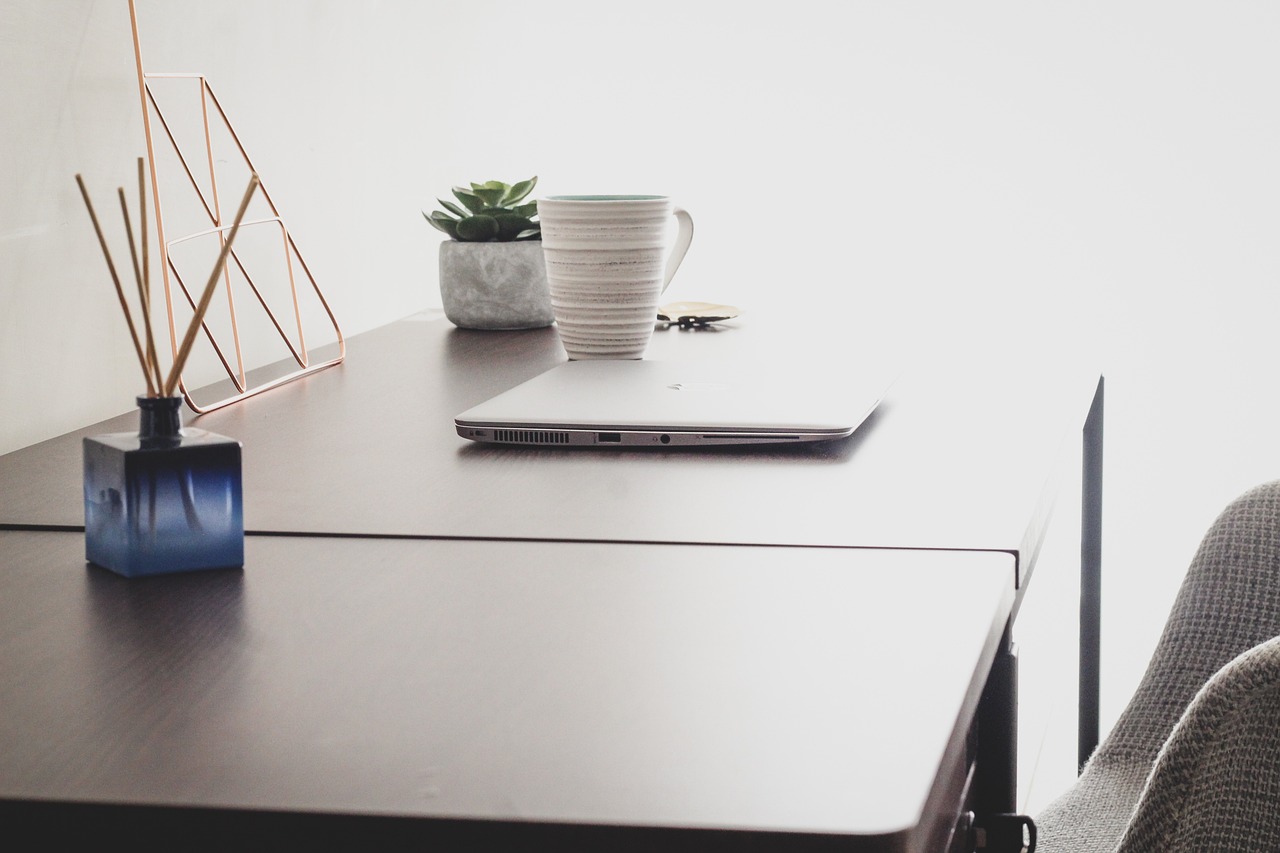
Creative Ideas for Furniture Repurposing
When it comes to furniture repurposing, the possibilities are as vast as your imagination. Old chairs, tables, and cabinets can be transformed into stunning pieces that not only enhance your home’s aesthetic but also tell a story. Imagine walking into a room and seeing a once-forgotten piece of furniture that has been lovingly restored and reinvented. It’s like giving an old friend a second chance at life! So, let’s dive into some creative ideas that can breathe new life into your old furniture.
One of the most popular projects is turning an old wooden ladder into a charming bookshelf. Just picture it: a rustic ladder leaning against the wall, adorned with your favorite books and decorative items. To create this, simply sand down the ladder to remove any rough patches, then paint or stain it to match your decor. You can even add some shelves made from reclaimed wood to give it a more polished look. This not only saves space but also adds a unique touch to your living area.
Another fantastic idea is to repurpose an old dresser into a bathroom vanity. If you have a dresser that’s seen better days, consider cutting out the top and installing a sink. This transformation creates a striking focal point in your bathroom while providing ample storage for toiletries. Just make sure to seal the wood properly to protect it from moisture. The blend of vintage charm and modern functionality will make your bathroom feel like a spa retreat.
What about those mismatched chairs you have lying around? Instead of letting them gather dust, why not turn them into a cohesive seating area? You can paint them all in the same color or use a fun mix of patterns and colors to create an eclectic vibe. Adding cushions in coordinating fabrics can enhance comfort and style. It’s like creating a mini art installation right in your dining room!
For those who love a bit of whimsy, consider transforming an old trunk into a coffee table. Not only does this add character to your living space, but it also provides hidden storage for blankets, magazines, or games. To achieve this, simply clean up the trunk, add some legs or keep it as is for a vintage look, and you’ve got yourself a conversation starter. You can even decorate the top with a glass panel to protect it while still showcasing the trunk's beautiful details.
Lastly, don’t forget about the potential of repurposing old doors. An old door can be turned into a stunning headboard for your bed, instantly adding a rustic charm to your bedroom. Simply sand it down, paint it, or leave it in its natural state for a more authentic look. You can even attach it to the wall or use bed frame brackets to secure it. It’s a simple yet effective way to make a bold statement in your space.
In summary, repurposing furniture isn’t just a way to save money; it’s a creative outlet that allows you to express your personal style. Whether you’re transforming a ladder into a bookshelf or an old trunk into a coffee table, each project tells a story and adds character to your home. So gather those old items and let your creativity flow. Who knows what beautiful pieces you can create?
Q: What tools do I need for furniture repurposing?
A: Basic tools like a screwdriver, hammer, sandpaper, paintbrushes, and a saw will help you get started. Depending on your project, you might also need a drill or a staple gun.
Q: Can I repurpose furniture without prior DIY experience?
A: Absolutely! Many projects are beginner-friendly, and there are plenty of tutorials available online to guide you through the process.
Q: How do I choose the right furniture to repurpose?
A: Look for pieces that have good bones but may need a little TLC. Items with solid wood construction are often the best candidates for repurposing.
Q: What should I do if I make a mistake during my project?
A: Mistakes are part of the learning process! Don’t be afraid to improvise or even start over. Each project is a chance to learn something new.
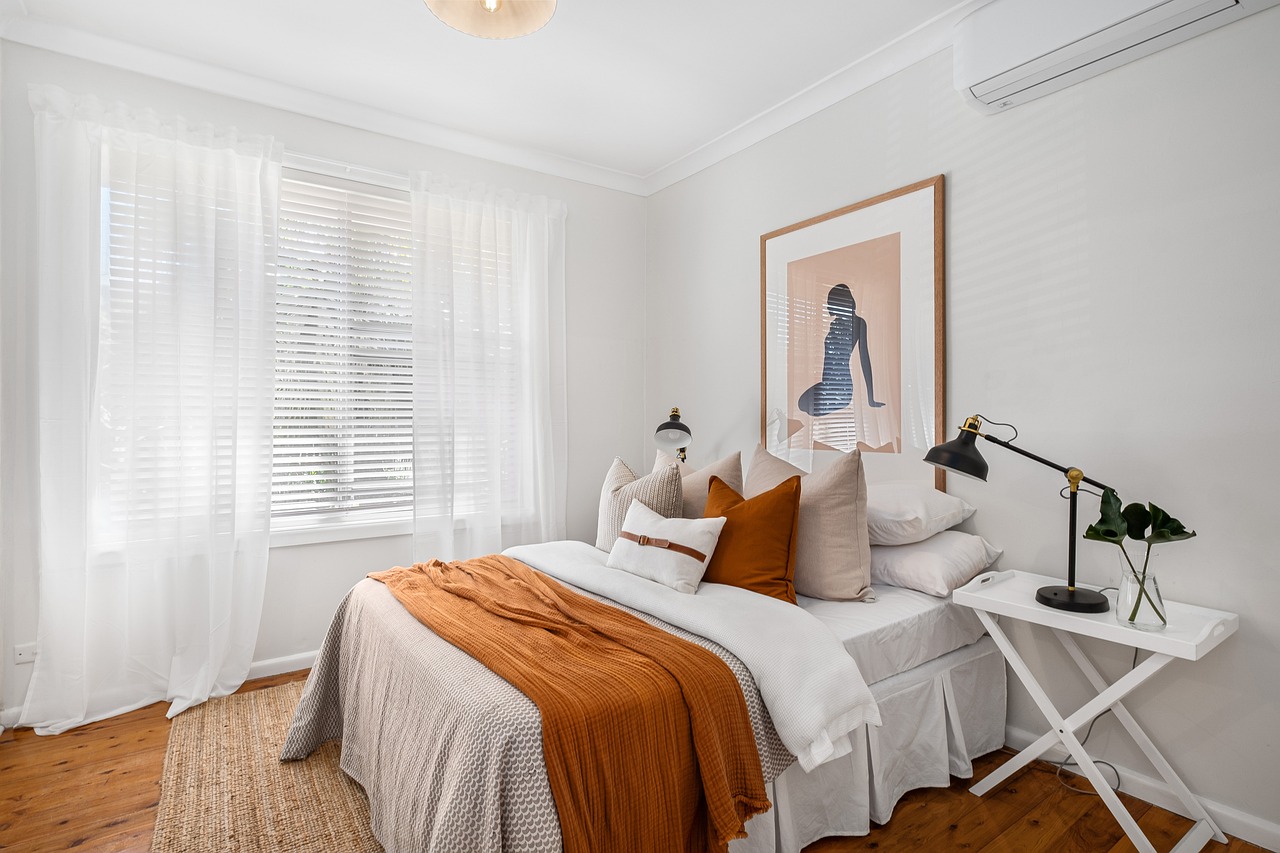
Transforming Household Items into Decor
Have you ever looked around your home and thought, "What on earth am I going to do with all these old items?" Well, it’s time to unleash your inner artist! Transforming everyday household items into stunning decor is not only a fun and creative outlet, but it also helps you declutter your space while being kind to the planet. Imagine turning that old glass jar into a chic candle holder or those mismatched socks into quirky wall art. The possibilities are endless, and the results can be absolutely breathtaking!
Let’s dive into some fantastic ideas that will inspire you to see your household items in a whole new light. For instance, have you ever considered using empty wine bottles as vases? With just a little paint and creativity, you can turn those bottles into beautiful centerpieces. Simply wrap the bottle in twine or jute, add some fresh or dried flowers, and voila! You have a rustic decor piece that adds warmth to your living room or dining table.
Another brilliant transformation involves using old picture frames. Instead of letting them gather dust in the attic, why not create a unique gallery wall? You can paint the frames in vibrant colors or leave them as they are for a vintage touch. Fill them with your favorite photos, fabric swatches, or even pressed flowers. This not only personalizes your space but also tells a story every time someone walks by.
If you have old books lying around, don’t toss them just yet! Stack them up to create a stylish side table or use them as a decorative base for a plant. You could also cut out pages to create unique wall art. Just imagine the compliments you'll get when guests see your artistic flair! Additionally, old wooden crates can serve as fantastic shelving units or storage solutions. Give them a fresh coat of paint, and they’ll look brand new, providing both functionality and charm.
Now, let’s talk about textiles. Those old tablecloths or curtains that you no longer use can be repurposed into throw pillows or even a cozy blanket. Just grab a needle and thread, and you’ll be amazed at how easy it is to create something beautiful and functional. You can even mix and match different patterns for a bohemian vibe that will make your space feel warm and inviting.
To give you a clearer idea of how these transformations can take place, here’s a quick table summarizing some household items and their potential decor transformations:
| Household Item | Transformed Decor |
|---|---|
| Glass Jars | Candle Holders or Vases |
| Old Picture Frames | Gallery Wall Art |
| Old Books | Side Tables or Wall Art |
| Wooden Crates | Shelving Units or Storage |
| Old Curtains | Throw Pillows or Blankets |
As you embark on this exciting journey of transforming household items into decor, remember that the key is to have fun and let your creativity flow. Don’t be afraid to experiment and think outside the box! Each piece you create not only adds character to your home but also tells a story of its own. So, gather those old items, roll up your sleeves, and get crafting!
Q: What are some easy items to start with for DIY decor projects?
A: Great question! Start with items like glass jars, old picture frames, and wooden crates. These are versatile and can be easily transformed into beautiful decor pieces.
Q: Do I need special tools for these projects?
A: While some projects may require basic tools like scissors and glue, many can be done with items you already have at home. Just get creative!
Q: How can I ensure my repurposed items match my home decor style?
A: Choose colors and materials that complement your existing decor. You can always paint or modify items to fit your style better!
Q: Can I sell my DIY decor creations?
A: Absolutely! Many people enjoy selling their handmade items online through platforms like Etsy or at local craft fairs. Just make sure to follow any local regulations.
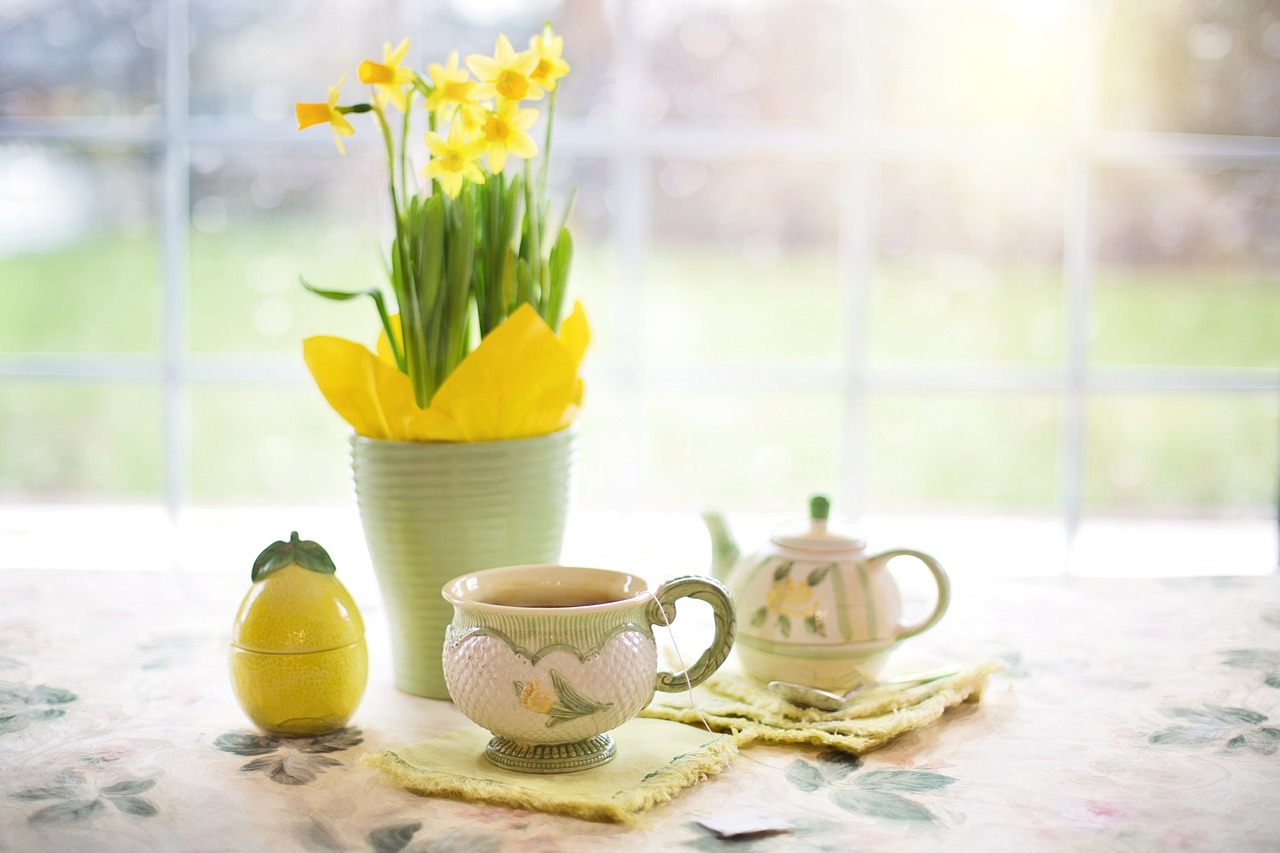
Upcycling Clothing into Home Accessories
Have you ever looked at an old shirt or a pair of jeans and thought, "What a waste!"? Well, it's time to change that mindset! Upcycling clothing into home accessories is not just a creative outlet; it’s a fantastic way to add a personal touch to your living space while also being environmentally friendly. Imagine transforming that worn-out T-shirt into a cozy cushion cover or turning those faded jeans into a stylish table runner. The possibilities are endless, and the results can be absolutely stunning!
One of the most exciting aspects of upcycling is that it allows you to express your unique style. Instead of spending a fortune on home decor, why not use what you already have? Here are a few ideas to get your creative juices flowing:
- Cushions and Pillows: Old clothing, especially soft fabrics like cotton or fleece, can be easily turned into cushion covers. Just cut the fabric to size, sew the edges, and stuff it with some filling or an old cushion. Voila! You have a brand-new pillow that adds a pop of color to your sofa.
- Wall Art: Have a favorite graphic tee that you can’t bear to part with? Frame it! Stretch the fabric over a canvas or simply hang it as is. This not only preserves the memory but also creates a unique piece of art that tells your story.
- Table Runners: Take that old tablecloth or a pair of jeans and transform them into a trendy table runner. Simply cut the fabric to your desired length and width, and you have a rustic yet chic addition to your dining table.
But wait, there’s more! You can also create beautiful wall hangings or even plant holders from your old clothes. For instance, a pair of denim shorts can become a quirky planter for your succulents. Just cut the shorts, fill them with soil, and plant your greenery. Hang it on your wall, and you’ll have a conversation starter right there!
Upcycling isn’t just about making something new; it’s about giving your old clothing a second chance at life. It’s like giving a beloved friend a makeover – you’re not just changing their appearance; you’re enhancing their essence. Plus, the satisfaction of creating something with your own hands is unmatched. You'll feel proud every time you see your upcycled pieces adorning your home.
Before diving into your upcycling projects, it's essential to gather the right tools. A good pair of scissors, sewing supplies, and a sewing machine (if you have one) can make the process smoother. Additionally, consider using fabric glue for no-sew projects, which can be a huge time-saver. Remember, it’s all about having fun and letting your creativity shine!
In conclusion, upcycling clothing into home accessories is a fantastic way to refresh your decor without breaking the bank. Not only does it allow you to showcase your creativity, but it also contributes to a more sustainable lifestyle. So, the next time you’re tempted to toss those old clothes, think twice! They might just be the perfect material for your next DIY masterpiece.
Q: What types of clothing are best for upcycling?
A: Look for items made from sturdy fabrics like cotton, denim, or linen. T-shirts, jeans, and even old curtains can work wonders!
Q: Do I need sewing skills to upcycle clothing?
A: Not necessarily! Many projects can be completed with fabric glue or by tying fabric together. However, basic sewing skills can open up more creative options.
Q: Where can I find inspiration for upcycling projects?
A: Websites like Pinterest, Instagram, and DIY blogs are fantastic resources for finding creative upcycling ideas. Just search for "upcycled clothing" and let the inspiration flow!
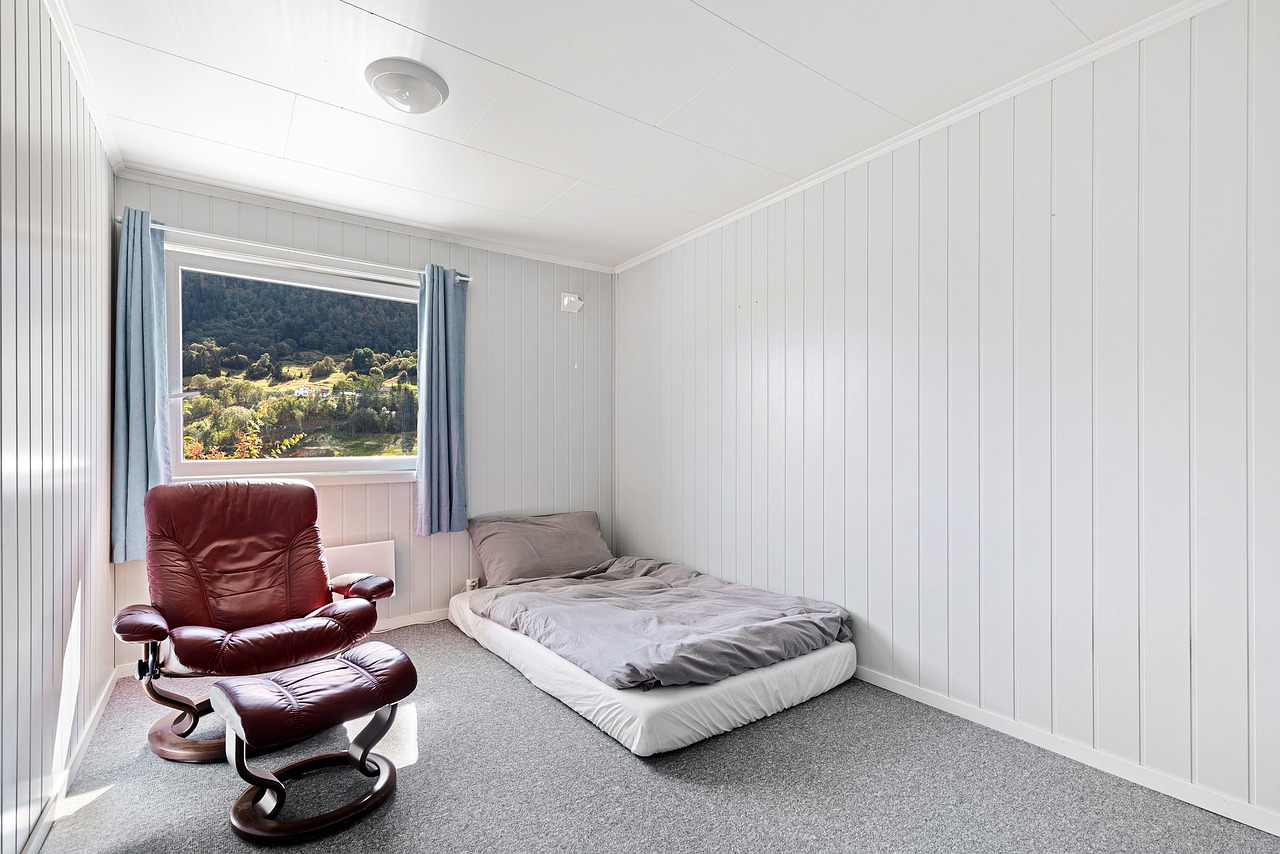
Using Nature for Rustic Decor
When it comes to home decor, there's something incredibly charming about bringing the beauty of the outdoors inside. Using natural elements not only adds a rustic touch to your home but also creates a serene atmosphere that can make any space feel more inviting. Imagine walking into a room that feels like a cozy cabin in the woods, with the warmth of wood and the earthy scent of nature surrounding you. Sounds appealing, right?
So, how can you incorporate nature into your decor without breaking the bank? The possibilities are endless! You can start by collecting items from your own backyard or local park. Think about branches, stones, leaves, and even pinecones. Each of these elements can be transformed into beautiful decor pieces. For instance, a simple branch can be turned into a stunning wall hanging by attaching it to a piece of twine and hanging it with some dried flowers or pictures. It’s a simple project that adds a personal touch to your space.
Another fantastic idea is to create unique centerpieces using natural materials. You can fill a clear glass vase with smooth stones and place a candle on top for an elegant yet rustic look. Or, take it a step further by using a wooden slice as a base for your centerpiece, adding seasonal flowers or even a small succulent garden. The combination of textures will not only catch the eye but also spark conversations among your guests.
If you're feeling particularly crafty, consider making a nature-inspired wreath for your front door. Gather twigs and branches to form a circular base, then embellish it with dried flowers, leaves, or even feathers. This not only welcomes guests with a touch of nature but also showcases your creativity. Plus, you can change it up with the seasons, adding seasonal elements to keep your decor fresh and exciting.
Don't forget about the power of color! Natural elements can introduce a palette of earthy tones into your home. Incorporating shades of green, brown, and even soft neutrals can create a calming environment. You can use these colors in your textiles, such as cushions or curtains, to complement the natural decor. Imagine a cozy living room adorned with soft green cushions, a wooden coffee table, and a centerpiece made from stones and twigs. It's a harmonious blend that invites relaxation.
Incorporating nature into your home decor doesn’t have to be complicated. With a little creativity and an eye for detail, you can transform simple natural elements into stunning decor pieces. So, why not take a stroll outside, gather some materials, and let your imagination run wild? The beauty of nature is waiting to be brought into your home!
Q: What types of natural materials can I use for decor?
A: You can use a variety of natural materials such as branches, stones, leaves, pinecones, and dried flowers. Get creative and see what you can find in your surroundings!
Q: How do I preserve natural elements for long-term use?
A: To preserve natural elements, consider drying flowers and leaves or using a clear sealant on wood and stones. This will help maintain their appearance and longevity.
Q: Can I mix natural decor with other styles?
A: Absolutely! Natural decor can complement a variety of styles, including modern, vintage, and industrial. The key is to balance the elements to create a cohesive look.

Seasonal Decor Ideas from Old Items
When it comes to decorating for the seasons, why not take a moment to look around your home and see what old items might be hiding in plain sight? Repurposing these forgotten treasures can not only save you money but also add a unique touch to your seasonal decor. The beauty of using old items is that each piece tells a story, creating a warm and inviting atmosphere that new store-bought decorations often lack. So, let’s dive into some creative ideas for transforming what you already have into festive decor that will impress your guests and keep your home feeling fresh throughout the year!
For spring, consider using old mason jars. These versatile containers can be transformed into beautiful vases for fresh flowers, or you can fill them with colorful eggs or pebbles for a cheerful centerpiece. Just imagine a cluster of mason jars, each filled with a different bloom, sitting on your dining table, radiating the essence of spring! Additionally, old wooden crates can be painted in pastel colors and used to create charming displays for plants or seasonal decorations.
As summer rolls in, think about how you can use old beach towels or blankets. By sewing them into pillow covers, you can bring a touch of the beach into your living room. Alternatively, you can repurpose old picture frames by painting them in bright colors and using them to create a gallery wall of summer memories. Add some seashells or sand from your last beach trip, and you’ll have a stunning display that captures the spirit of summer.
When autumn arrives, it’s time to embrace the rich colors of the season. Old sweaters can be transformed into cozy pillow covers or even cute table runners. Just cut off the sleeves and sew up the ends to create a rustic look that’s perfect for fall! You can also use empty wine bottles as candle holders. Simply paint them in warm autumn hues or wrap them with twine for a rustic feel. Place them on your porch or dining table to create a warm, inviting glow during those crisp autumn evenings.
Finally, as winter approaches, don’t let those old holiday decorations go to waste! Instead of buying new ornaments, consider repurposing items like old buttons, fabric scraps, or even leftover wrapping paper. You can create unique ornaments or garlands that will add a personal touch to your tree. If you have old scarves, they can be transformed into festive table runners or even wreaths for your front door. The key is to think outside the box and let your creativity shine!
In conclusion, seasonal decor doesn’t have to break the bank. By repurposing old items, you not only save money but also create a home that reflects your personality and style. So, next time you think about refreshing your seasonal decorations, take a moment to explore the treasures you already own. You might just be surprised at what you can create!
Q: What are some easy items to repurpose for seasonal decor?
A: Common items include mason jars, old fabric, picture frames, and wooden crates. These can be easily transformed into vases, pillows, or decorative displays.
Q: How can I ensure my repurposed items fit the seasonal theme?
A: Use colors and materials that reflect the season. For example, pastel colors for spring, bright colors for summer, warm tones for autumn, and cool colors for winter.
Q: Are there any tools I need for repurposing items?
A: Basic tools like scissors, glue, a sewing machine, and paint can go a long way in helping you transform old items into beautiful decor.
Q: Can I involve my kids in these DIY projects?
A: Absolutely! Many repurposing projects are kid-friendly and can be a fun way to spend time together while teaching them about creativity and sustainability.
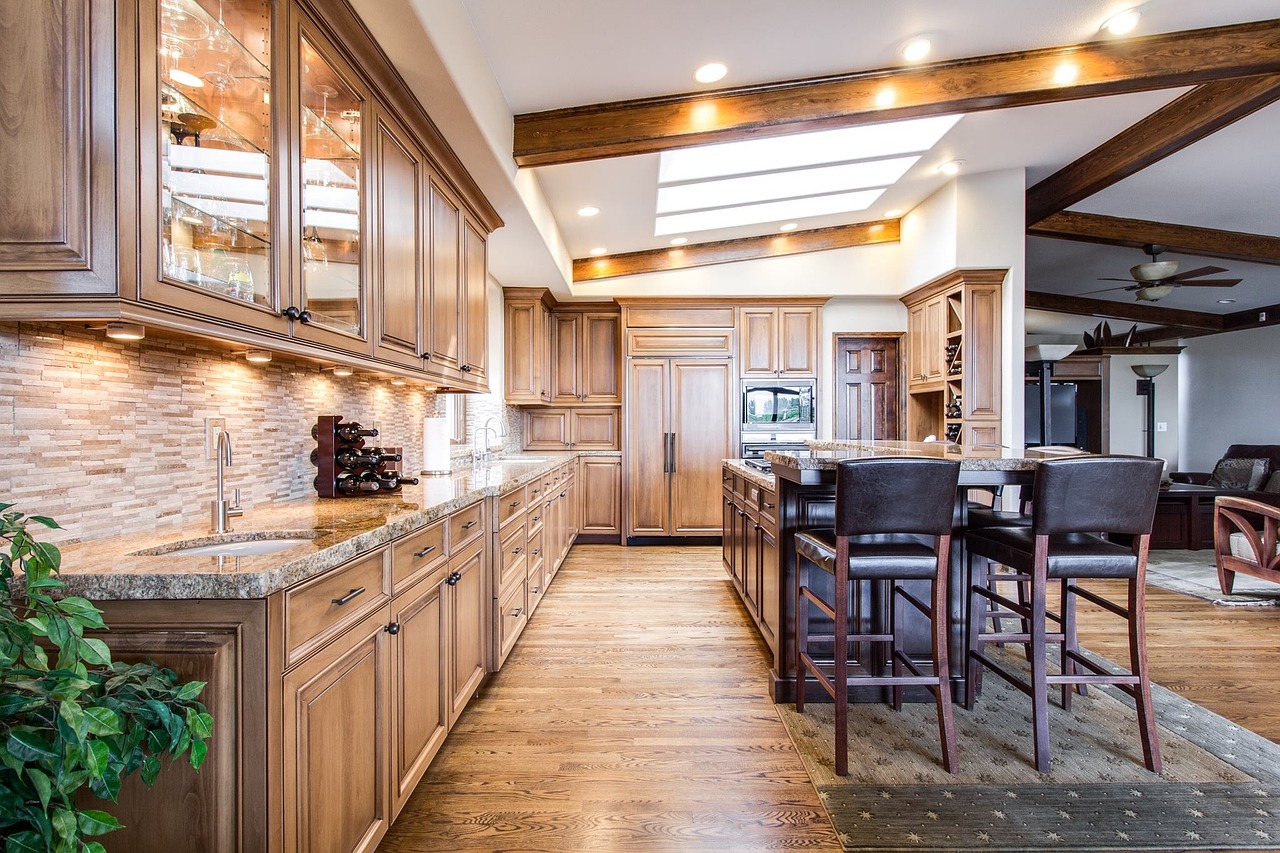
Sharing Your DIY Creations
Once you've poured your heart and soul into your DIY projects, it’s time to show them off to the world! Sharing your creations not only allows you to bask in the glory of your hard work but also inspires others to dive into their own repurposing adventures. Think of it like throwing a party for your crafts—everyone loves to see what you've been up to!
So, how can you share your masterpieces? There are countless platforms available, each with its own unique flavor. Social media sites like Instagram and Pinterest are fantastic for showcasing your finished pieces with stunning visuals. A well-lit photo of your repurposed furniture or a stylish arrangement of upcycled decor can garner attention and spark conversations. Consider using relevant hashtags such as #DIYDecor or #UpcycledArt to reach a broader audience. This way, your projects can inspire not just friends and family but also fellow DIY enthusiasts around the globe!
If you prefer a more community-driven approach, consider joining DIY groups on platforms like Facebook or Reddit. These groups are filled with like-minded individuals who share tips, ideas, and encouragement. You can post your creations, ask for feedback, or even seek advice for your next project. Engaging with these communities can lead to valuable connections and friendships, as you all bond over your shared passion for creativity.
Another option is to create a blog or a personal website where you can document your DIY journey. This platform allows you to go beyond just posting pictures; you can share detailed tutorials, the thought process behind your projects, and even the challenges you faced along the way. Not only does this serve as a portfolio of your work, but it also creates a space for others to learn from your experiences. Plus, writing about your DIY adventures can be incredibly fulfilling!
If you're feeling adventurous, consider hosting a local craft night or workshop. Invite friends, family, or neighbors to join you in a fun evening of crafting. This not only allows you to share your skills but also creates a sense of community. You can demonstrate how to repurpose certain items and encourage others to bring their own projects to work on. It’s a win-win situation where everyone leaves with new skills and perhaps even a new piece of decor for their home!
Lastly, don’t underestimate the power of word-of-mouth. Share your creations with your local community, whether it's at a coffee shop, community center, or even at work. You never know who might be inspired by your creativity and decide to embark on their own DIY journey. Remember, every time you share your work, you plant a seed of inspiration that could blossom into someone else’s next big project!
In conclusion, sharing your DIY creations is about more than just showing off; it’s about building a community, inspiring others, and celebrating creativity. So grab your phone, take those pictures, and let the world see the magic you've created!
Q: What are some good platforms for sharing DIY projects?
A: Great platforms include social media sites like Instagram, Pinterest, Facebook groups, and even personal blogs or websites. Each offers unique ways to connect with other DIY enthusiasts!
Q: How can I get feedback on my DIY projects?
A: Joining DIY communities online or in-person can provide you with valuable feedback. You can also ask friends and family for their opinions on your work.
Q: What if I want to sell my DIY creations?
A: Consider setting up an online shop on platforms like Etsy or at local craft fairs. Make sure to promote your shop on social media to reach potential buyers!
Frequently Asked Questions
- What is repurposing and why is it beneficial?
Repurposing is the creative process of transforming old or unused items into new and functional decor. This practice not only helps reduce waste, making it environmentally friendly, but it also saves you money and adds a unique touch to your home. By giving new life to items, you can create one-of-a-kind pieces that reflect your personal style.
- What tools do I need for DIY repurposing projects?
To embark on your DIY repurposing journey, having the right tools is essential. Some must-have tools include a hot glue gun, scissors, paintbrushes, a screwdriver, and a measuring tape. These tools will make your crafting experience smoother and more enjoyable, allowing you to focus on unleashing your creativity.
- Can I repurpose furniture, and if so, how?
Absolutely! Old furniture can be transformed into stunning new pieces with a bit of creativity. For example, you can repaint an old chair or turn a wooden crate into a stylish coffee table. The possibilities are endless, and with some imagination, you can enhance your home’s aesthetic while maintaining functionality.
- What household items can be turned into decor?
Common household items like glass jars, old bottles, and fabric scraps can be easily transformed into unique decor elements. For instance, glass jars can be painted and used as candle holders, while fabric can be sewn into decorative cushions. The key is to look at everyday items with a fresh perspective!
- How can I upcycle old clothing into home accessories?
Old clothing can be a treasure trove for upcycling! You can turn worn-out shirts into trendy table runners or use fabric from jeans to create stylish wall art. With a little creativity and some basic sewing skills, you can make beautiful home accessories that not only look great but also tell a story.
- What natural materials can I use for rustic decor?
Nature provides a wealth of materials perfect for rustic decor. You can use branches, stones, leaves, and even pinecones to create stunning DIY projects. Incorporating these elements into your home can create a warm and inviting atmosphere, bringing the beauty of the outdoors inside.
- How can I create seasonal decor from old items?
Repurposing old items for seasonal decor is a fun way to keep your home festive throughout the year. For example, you can transform old sweaters into cozy autumn table runners or use glass jars filled with ornaments for winter decor. This approach not only saves money but also allows you to express your creativity with each season.
- Where can I share my DIY creations?
Once you've completed your DIY projects, it's time to showcase your creativity! You can share your creations on social media platforms like Instagram or Pinterest, or join DIY communities on Facebook. These platforms are great for inspiring others and connecting with fellow DIY enthusiasts who share your passion for repurposing.



















